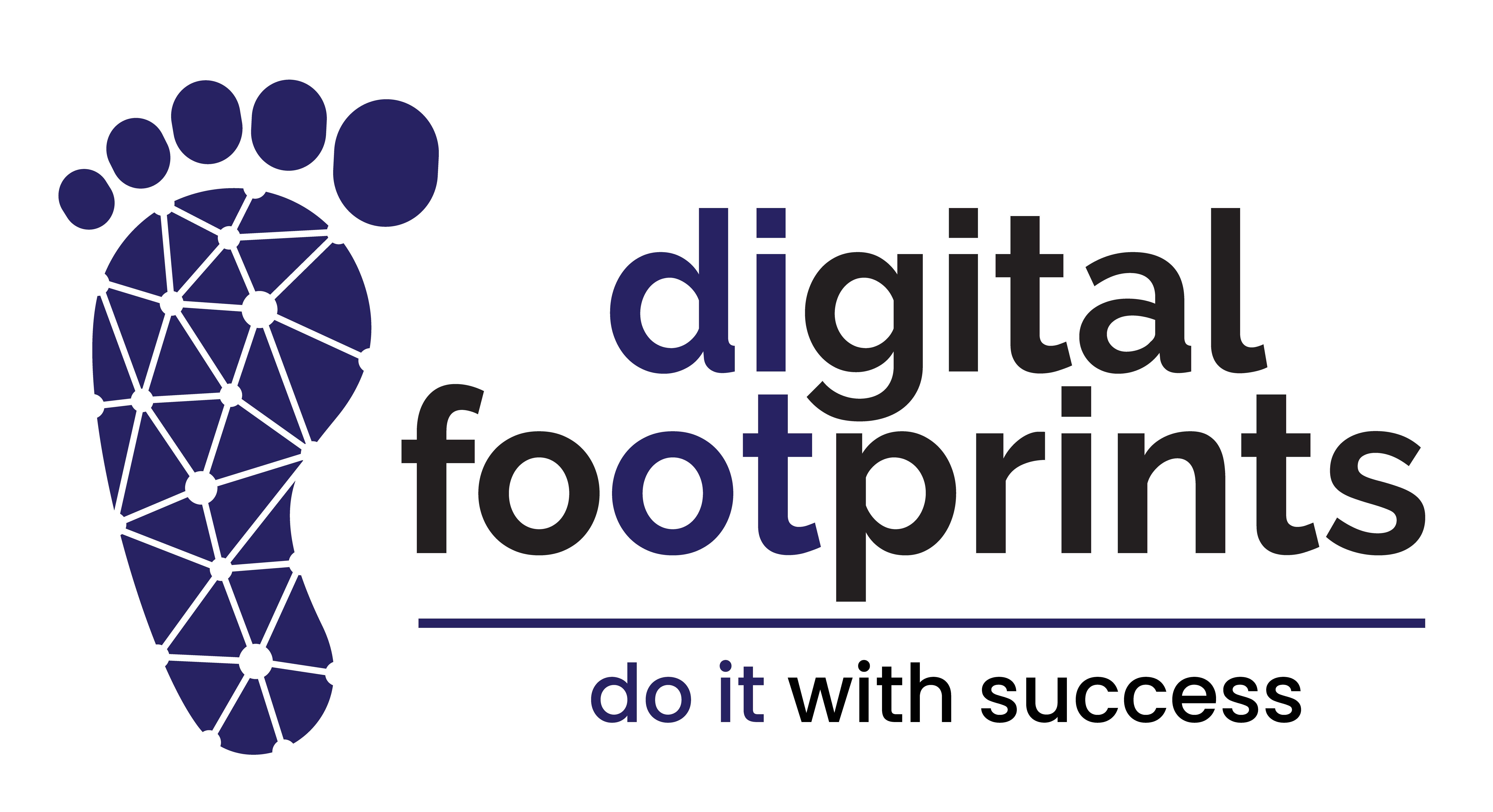
Subscribe to my Blog
Listen to my podcast

Create an SEO Strategy
The world of SEO (Search Engine Optimization) can feel overwhelming, but don’t worry! Here’s a roadmap to get you started on crafting a powerful SEO strategy:
1. Know Your Audience, Know Your Keywords:
Who are you trying to reach? What are they searching for? Brainstorm terms related to your niche and delve into keyword research tools to identify high-potential keywords with lower competition.
2. Competitor Spy Games:
Analyze the top-ranking websites for your target keywords. What content do they offer? What gaps can you fill? Can you create something more informative, engaging, or visually appealing?
3. Set SMART Goals:
Don’t just aim for “better SEO.” Define Specific, Measurable, Achievable, Relevant, and Time-bound goals. Do you want to increase organic traffic by 20% in 3 months? Rank on the first page for a particular keyword within 6 months?
SEO is a long-term game. Stay updated on SEO trends, consistently create fresh content, and track your results using analytics tools. This allows you to refine your strategy and optimize for continued success.
By following these steps, you’ll be well on your way to building a strong SEO foundation that attracts organic traffic and propels your website towards search engine glory. Remember, consistent effort and valuable content are key to winning the SEO game!
Start a Blog
Have you ever dreamt of sharing your ideas with the world? Well, guess what? Starting a blog is easier than ever! Here’s a quick guide to get your blog up and running in no time:
1. Find Your Niche: What are you passionate about? Cooking? Travel? Video games? Choose a topic that excites you and that you can consistently create content for.
2. Pick Your Platform: There are tons of great blogging platforms out there, like Wix, WordPress, or Blogger. Each offers user-friendly interfaces and free plans to get you started.
3. Name it and Claim it: Craft a catchy blog name that reflects your niche and is easy to remember. Then, secure your domain name – your blog’s unique web address.
4. Design Time! Most platforms offer customizable templates to give your blog a personal touch. Choose a design that’s easy to navigate and visually appealing.
5. Craft Your First Post: Don’t overthink it! Jump in and write about something you love. Focus on providing value to your readers with clear and engaging content.
Bonus Tip: Promote, Promote, Promote! Share your blog on social media, engage with other bloggers in your niche, and explore online communities to spread the word.
Starting a blog is an exciting adventure. By following these quick steps, you’ll be well on your way to sharing your voice and building a loyal audience. Remember, consistency is key! Keep creating fresh content, interact with your readers, and have fun with it!
Target Easy Keywords
Conquering the competitive world of SEO can feel like climbing Mount Everest. But what if you could snag some early victories and build momentum before tackling the peak? Targeting “easy keywords” is a strategic way to get your website noticed and start attracting organic traffic.
Here’s how to find and leverage these SEO shortcuts:
1. Long Tail Treasures: Forget one-word wonders. Explore long-tail keywords – more specific phrases with lower competition. Instead of targeting “running shoes,” aim for “best running shoes for flat feet” or “comfortable running shoes for women.”
2. Leverage Local Love: Are you a local business? Target keywords that include your city or region. People searching for “plumber near me” are more likely to convert than those looking for a generic “plumbing services” phrase.
3. Answer the Question: Think about what your ideal audience is searching for. Use question-based keywords like “how to change a tire” or “best places to hike near Yosemite.” Content that directly addresses user queries is a goldmine for easy wins.
4. Friend, Not Foe: Analyze your competitor’s content, but don’t just copy it! Look for gaps they haven’t filled. Can you create a more in-depth guide or offer a unique perspective on a similar topic?
5. Leverage Free Tools: Don’t underestimate the power of free SEO tools like Google Keyword Planner or answerthepublic.com. These tools can help you identify relevant long-tail keywords and search queries.
Remember: Easy keywords are stepping stones, not the final destination. As you gain traction, use the traffic and data you gather to tackle more competitive keywords and refine your overall SEO strategy.
By following these tips, you can start climbing that SEO mountain with some early victories under your belt. Target easy keywords, create valuable content, and watch your website rise in search engine rankings!
Offer Other Useful Content
In today’s digital age, websites are battlegrounds for attention. But amidst the flashy banners and promotional messages, what truly resonates with visitors? The answer is simple: useful content.
Here’s why offering valuable content is the secret weapon your website needs:
- Builds Trust and Credibility: When you provide insightful information that genuinely helps your audience, you establish yourself as an authority in your field. People trust websites that offer solutions and educational content.
- Boosts Engagement: Useful content keeps visitors engaged. Whether it’s a blog post packed with tips, a downloadable guide, or informative videos, valuable content entices visitors to stay longer and explore more.
- Improves Search Engine Ranking: Search engines love websites with fresh, informative content. By consistently creating content that addresses user needs and incorporates relevant keywords, you can climb the search engine ladder and attract organic traffic.
- Drives Conversions: Useful content isn’t just about information; it’s about guiding users towards a desired action. Whether it’s a purchase, a newsletter signup, or a phone call, well-crafted content can gently nudge visitors towards conversion.
So, how do you create content that’s genuinely useful?
- Know Your Audience: Who are you trying to reach? What are their challenges and pain points? Tailor your content to address their specific needs and interests.
- Focus on Value: Don’t just promote your products or services. Offer valuable information, answer common questions, and solve problems your audience faces.
- Variety is Key: Experiment with different content formats like blog posts, infographics, videos, or downloadable guides. Keep your audience engaged by offering a variety of ways to consume information.
- Be Clear and Concise: People don’t have time to wade through dense text. Present information in a clear, concise, and easy-to-understand manner.
By prioritizing valuable content, you transform your website from a digital brochure into a trusted resource. This not only improves user experience but also paves the way for long-term success and online dominance.
Promote on Social Media
You’ve built a fantastic website, filled with informative content and valuable resources. But how do you get people to visit it? The answer lies in the bustling world of social media! Here are some key strategies to promote your website and turn casual scrollers into engaged visitors:
1. Know Your Platforms: Not all social media platforms are created equal. Identify the platforms where your target audience spends their time. Are they foodies on Instagram or business professionals on LinkedIn? Tailor your content and approach accordingly.
2. Post Consistently: Social media thrives on fresh content. Develop a posting schedule and stick to it. Share website content, industry news, or even behind-the-scenes glimpses to keep your audience engaged.
3. Tease and Tempt: Don’t just dump website links on your followers. Craft engaging posts that pique their interest and encourage them to click for more. Highlight valuable content snippets, pose questions, or offer exclusive website previews.
4. Visual Storytelling: Social media is a visual playground. Use eye-catching images, infographics, or short videos to grab attention and make your website content stand out.
5. Leverage Hashtags: Hashtags are like social media keywords. Use relevant hashtags to increase the discoverability of your posts and attract users searching for those topics. But don’t go overboard; stick to a few targeted hashtags.
6. Social Sharing is Caring: Make it easy for people to share your website content. Include social sharing buttons on your website and encourage your followers to share what they find valuable.
7. Engage with Your Audience: Social media is a two-way street. Respond to comments, answer questions, and participate in conversations. This builds relationships with your audience and fosters brand loyalty.
8. Collaborate and Connect: Partner with influencers in your niche or participate in relevant online communities. This exposes your website to new audiences and builds trust through external validation.
9. Track and Analyze: Don’t be afraid to experiment and see what resonates with your audience. Use built-in social media analytics tools to track engagement and identify what content performs best. This allows you to refine your strategy and maximize your website promotion efforts.
By implementing these steps, you can transform your social media presence into a powerful megaphone for your website. Remember, consistency, valuable content, and audience engagement are key to amplifying your reach and driving traffic back to your website. So, get out there, be social, and watch your website flourish!
Leverage Email Marketing
In the age of flashy social media and ever-changing algorithms, it’s easy to overlook a tried-and-true marketing champion: email. But email marketing remains a powerful tool to nurture leads, build relationships, and ultimately, promote your website. Here’s how to leverage email marketing for website success:
Build Your List: It all starts with a targeted email list. Offer valuable incentives like downloadable guides, exclusive discounts, or early access to new content in exchange for email signups.
Segment for Success: Don’t blast generic emails to everyone. Segment your audience based on interests, demographics, or website behavior. This allows you to send targeted emails with content that resonates more deeply.
Value Over Hype: People are bombarded with promotional emails. Focus on providing value. Share informative blog posts, industry news relevant to your audience, or highlight helpful resources available on your website.
Calls to Action are Key: Don’t leave your audience hanging. Include clear calls to action (CTAs) in your emails, urging them to visit specific website pages, sign up for a free trial, or make a purchase.
A/B Testing is Your Friend: Don’t be afraid to experiment with email subject lines, content formats, and CTA placement. A/B testing allows you to see what resonates best with your audience and optimize your email campaigns for maximum impact.
Mobile Optimization is Crucial: A large chunk of emails are opened on mobile devices. Ensure your emails are mobile-friendly with responsive design and clear CTAs optimized for smaller screens.
Personalization Makes a Difference: A simple touch like addressing your audience by name can go a long way. Consider incorporating personalization elements in your emails to create a more engaging experience.
Track and Analyze: Just like social media, email marketing thrives on data. Track key metrics like open rates, click-through rates, and conversion rates. Analyze your results to understand what works and refine your strategy for future campaigns.
By leveraging email marketing effectively, you can turn passive website visitors into engaged subscribers and ultimately, loyal customers. Remember, email marketing is about building trust and providing value. When you do that, you’ll be well on your way to promoting your website and achieving your marketing goals.
Add Your Business to Online Directories
In today’s digital world, online visibility is crucial for business success. One often-overlooked strategy is leveraging the power of online directories. These websites act as virtual phonebooks for potential customers searching for businesses like yours. Here’s how adding your business to online directories can supercharge your website promotion:
Boost Local SEO: Many directories focus on local listings. Claiming your business profile allows you to control your online presence, ensuring accurate information like address, phone number, and website link are displayed prominently. This improves local search engine optimization (SEO), making it easier for potential customers in your area to find you.
Free Promotion, Big Impact: Most online directories are free to list your business. This is a fantastic opportunity to gain valuable online real estate without breaking the bank. The more directories you’re listed in, the wider your online reach becomes.
Increase Website Traffic: Directories often drive targeted traffic to your website. When potential customers find your listing and click through to your website, it increases website visits and potential conversions.
Build Credibility: Being listed in reputable online directories lends credibility to your business. Customers are more likely to trust a business with a consistent online presence across multiple platforms.
Reviews and Ratings: Some directories allow customers to leave reviews and ratings. While not always in your control, positive reviews can significantly influence customer decisions. Encourage satisfied customers to leave positive reviews to strengthen your online reputation.
Here’s how to get started:
Research Relevant Directories: Focus on directories relevant to your industry and location. Popular options include Google My Business, Yelp, Bing Places for Business, and industry-specific directories.
Claim and Optimize: Search for your business on each directory and claim your existing listing if available. If not, create a new listing. Optimize your profile by ensuring all information is accurate, including high-quality photos, detailed descriptions, and a clear call to action directing users to your website.
Be Consistent: Maintain consistency across all directories. Use the same business name, address, phone number, and website URL.
Stay Updated: Information changes. Update your listings promptly across all directories to maintain accuracy and avoid confusing potential customers.
Adding your business to online directories is a simple yet powerful strategy to promote your website and attract new customers. By leveraging these free resources and maintaining a consistent online presence, you’ll be well on your way to claiming your digital turf and achieving long-term online success.
Using these 7 key tools to promote your website your traffic will sore and conversions will begin coming in. Always stay relevant, authoritative, and resourceful to your audience because the content is still king.




